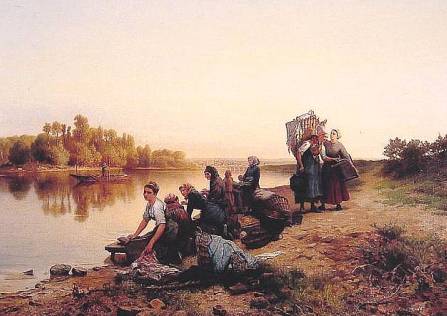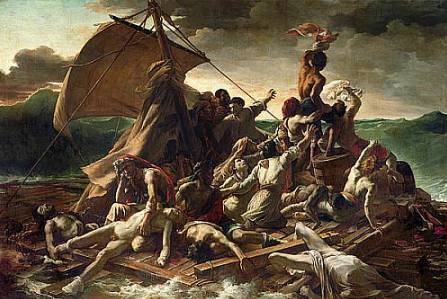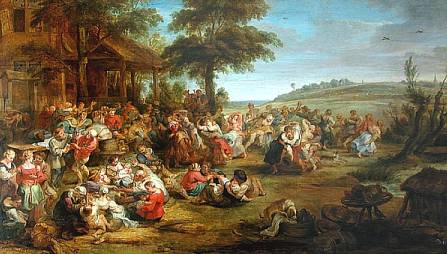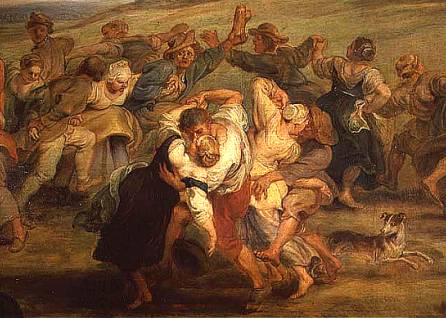Images of Country and Urban Laundrywomen (Late 19th Century/Early 20th Century)

Daniel Ridgway Knight, "Wash Day," 1875
"Knight was also strongly effected by the works of Jean-Francois Millet. In 1874 while painting in Barbizon, Knight went to visit Millet and found his view of peasant life to be too fatalistic. As opposed to Millet, Knight focused on depicting the rural classes during their happier moments" (source).

Elizabeth Klumpke,
"In the Wash House," 1888
Although this somewhat idealized painting by Klumpke has no direct connection with Zola's novel, another Klumpke painting ("Reverie") was inspired
by Zola's novel The Dream.

Caroline Lord, "The Acme Laundry," 1911
Women laundry employees in Cincinnati.
Gericault's "Raft of the Medusa"

Theodore Gericault, "Raft of the Medusa," 1819
Measuring over 16 feet by 23 feet, the painting took eight months to complete.
"The event depicted here is the aftermath of the 19th century sinking of a ship called the
Medusa. From an original group of 149 on board, there were only 15 survivors after nearly
two weeks at sea on this raft. A later inquiry uncovered gruesome stories of murder,
cannibalism, and other depravity during the 12 days adrift with no food and little hope of
rescue. Notice how Géricault portrays the twisted, rotting, wretched bodies to express the
horror of their ordeal"
(source).
For a more detailed account, check out this review
of a book-length study of Gericault's painting.
Veronese's "Wedding at Cana"

Paolo Veronese,
"Wedding at Cana," 1563
"The painting depicts the wedding feast at Cana, a miracle story from the Christian New Testament. In the story Jesus and his disciples were invited to a wedding celebration in Cana, Galilee. Towards the end of the feast, when the wine was running out, Jesus commanded servants to fill jugs with water, which he turned into wine (his first miracle of seven)" (source).
"Above Jesus, on an elevated balcony or walkway, several men butcher the meat of an unidentified animal. To their right more meat is also being brought in. Art critics generally think this animal is a lamb, considering Jesus is the sacrificed "Lamb of God", or Agnus Dei. The butchered lamb is therefore symbolic of his future sacrifice. Christ is placed directly under the blade" (source).
Rubens's "Kermesse"

Peter Paul Rubens, "Kermesse," c. 1630-35
A country carnival being celebrated with great energy and joy.
Zola, L'Assommoir, p. 78. ". . . He simply rolled his eyes salaciously in the direction
of the picture. The ladies, when they'd go right up close, gave little shrieks then looked
away, scarlet in the face. But their menfold, sniggering, made them stay with them while
they searched the canvas for smutty details.
'Take a look at this!' Boche kept repeating. 'This is worth a fortune. Here's someone puking.
And there's someone watering the dandelions. And
that one--oh! as for that one! . . . Well! This 'ere's a fine lot, I must say.'"

Peter Paul Rubins, Detail from "Kermesse," c. 1630-35
For more information on Zola and L'Assommoir, see Zola for the 21st Century.
Design by Eva's Graphics